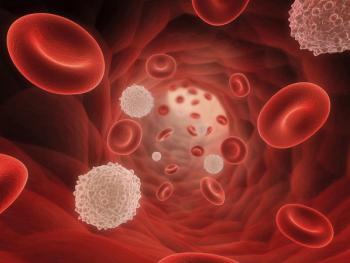
Chemoimmunotherapy Ups PFS in Early-Stage Follicular Lymphoma
TROG 99.03 constitutes “the only high level evidence currently available to guide decision making for this group of patients,” says investigator Michael MacManus.
Adding systemic chemotherapy to involved-field radiotherapy reduced the risk of relapse outside radiation fields and improved progression-free survival (PFS) compared with radiotherapy alone in patients with early-stage follicular lymphoma, according to results of the Trans-Tasman Radiation Oncology Group (TROG) 99.03 study,
“If you wish to cure a patient with early-stage follicular lymphoma, the approach associated with the highest probability of long-term disease control would appear to be a combination of involved-field radiotherapy and rituximab-containing chemoimmunotherapy,” study researcher Michael MacManus, MBBCh, of Peter MacCallum Cancer Centre, Melbourne, told Cancer Network. “This trial constitutes the only high-level evidence currently available to guide decision making for this group of patients.”
According to MacManus, because of the long natural history of early-stage follicular lymphoma and the fact that short-term survival is good regardless of the initial treatment given, management of these patients has often been quite ad hoc in the community, ranging from no initial therapy to aggressive multiagent chemotherapy.
“The absence of randomized trials has meant that treatment decisions have been made without high-level evidence to support them,” MacManus said. “Nevertheless, there is very significant older literature showing that localized disease is curable with radiotherapy alone, but that disease often relapses outside radiation fields when radiotherapy is given as a single modality.”
Therefore, MacManus and colleagues conducted this multicenter trial to compare involved-field radiation therapy (IFRT) with or without chemotherapy in the setting of early follicular lymphoma. A total of 150 patients with stage I or II disease were randomly assigned to radiotherapy alone with 30-Gy IFRT or IFRT plus 6 cycles of cyclophosphamide, vincristine, and prednisone (CVP)-or, post-2006, to rituximab-CVP (R-CVP).
“The results of combined-modality therapy were much better than the results of single-modality therapy, especially when the systemic therapy contained rituximab,” MacManus said. “We were surprised by how much the addition of the rituximab-containing R-CVP regimen improved progression-free survival.”
With a median follow-up of just under 10 years, PFS was superior in the combination arm compared with the radiotherapy-alone arm (HR, 0.57; 95% CI, 0.34–0.95; P = .033). The 10-year PFS was 59% for combination treatment compared with 41% for radiotherapy alone.
Patients who received chemotherapy with R-CVP had even greater improvements in PFS compared with radiotherapy alone (HR, 0.26; 95% CI, 0.07–0.97; P = .045).
Ten deaths occurred in the IFRT-alone arm, and five in the combination arm. The 10-year OS rate was 86% for patients treated with radiotherapy alone and 95% for those who received combination treatment.
“This study confirmed that radiotherapy is a highly effective and safe therapy for follicular lymphoma, and the overall survival in both arms was very good compared to historical series,” MacManus said. “This study showed, for the first time, that the long natural history of the disease can be changed by adding systemic therapy to radiotherapy.”
The researchers also found that PET staging was associated with superior PFS (HR, 0.61; P = .056), and that early systemic therapy appeared to reduce the risk of transformation to aggressive lymphoma in later years.
Patients assigned to radiotherapy had frequent acute grade 1 or 2 toxicities, but only 2% had grade 3 or 4 toxicities. In comparison, grade 3 events were more common with the combination therapy. Grade 3 toxicities occurred on 35 occasions. The most common toxicities were neutropenia, infection, diarrhea, elevated gamma-glutamyl transferase, fatigue, and febrile neutropenia. Fourteen percent of patients had grade 4 neutropenia.
“Our study showed that the systemic therapy used in this trial, generally considered to be a low-toxicity regimen, produced much more toxicity than low-dose involved-field radiotherapy, and therefore would not be a better choice for single-modality ‘palliative therapy’ than radiotherapy in unfit or elderly patients with localized follicular lymphoma. It would also be cost-effective,” MacManus said.
Newsletter
Stay up to date on recent advances in the multidisciplinary approach to cancer.

















































































